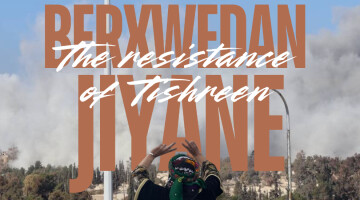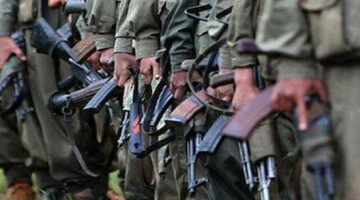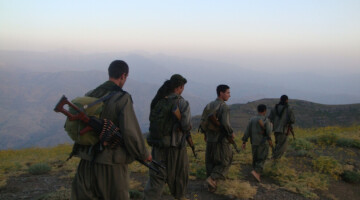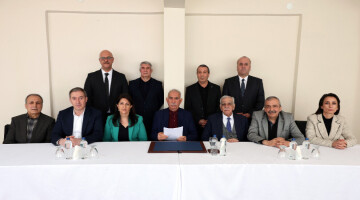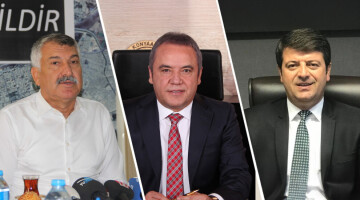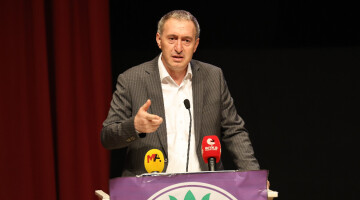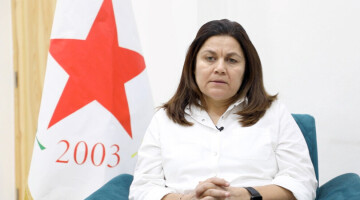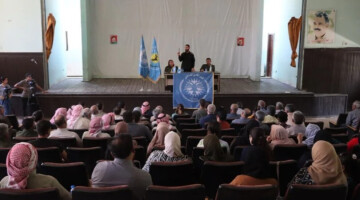Despite ceasefire agreements, the attacks against the autonomous areas aimed at expanding the Turkish zone of occupation in northern and eastern Syria continue unabated. In particular, the town of Ain Issa on the M4 international highway that runs through northern Syria like a lifeline, as well as the largely Christian-populated town of Til Temir (Tal Tamer, Kurdish: Girê Xurma), about 40 kilometers north of Hesekê, have been the focus of attacks by the Turkish army and its proxy forces from the so-called "Syrian National Army" (SNA) for weeks. Even the agreement reached by the Syrian Democratic Forces (SDF) with Russia and the Damascus regime earlier this week to establish observation posts in Ain Issa to monitor Turkish aggression and violations of the agreement made in the fall of 2019 has not yet led to a decrease in attacks. Bombardments by Turkish artillery and attempts by infiltration squads under the command of seasoned veterans of the jihadist militia "Islamic State" (IS) to break through the defensive lines and advance into the urban core of Ain Issa and Til Temir continue.
Artillery fire by the occupation forces was last reported from Ain Issa on Saturday evening, and the Syriac Military Council (MFS) reported on Sunday that it had again repelled an infiltration attempt in the village of Umm al-Keyf on the basis of legitimate self-defense. According to the MFS, the attacks on Til Temir came due to Russia's failure as the regime's guarantor power to enforce the ceasefire agreement in the region and the inability of Syrian government forces to respond to the attacks.
SDF commander Ziyad Halab, stationed in Ain Issa, accuses Russia of deliberately failing to ensure compliance with its obligations under the agreement. Otherwise, he said, it is hard to explain why neither regime forces nor Russian soldiers have so far fired "not a single shot" during attacks by Turkey and its allies. "After all, the attacks are not new; they have merely intensified recently. Turkey is taking advantage of the power vacuum after the US troop withdrawal in the fall of 2019, and the Sochi ceasefire agreement has not changed this situation either," the SDF commander said.
Regarding the establishment of observation posts in Ain Issa, Ziyad Halab stated that it is not a new agreement as portrayed by some media, but an application of the Sochi agreement on northern Syria. "In any case, we are ready to respond to the attacks against our regions accordingly. Our fighters have been able to demonstrate this all too often in recent times," Halab said. The commander said he is confident that the expulsion of the invading forces and liberation of the occupied territories is only a matter of time. "I firmly believe that the next year will mark the beginning of a new revolution."
The strategic importance of Ain Issa
Ain Issa is one of the important centers in the Euphrates region and is located on the road connecting Hesekê and Aleppo. The city is of strategic importance as the M4 transport route crosses northern Syria like a lifeline. Turkey and its allies have long wanted to annex the region to the illegal occupation zone. Capturing the area would open the way for Turkey to Raqqa, and Kobanê would thus be cut off from the remaining autonomous areas in northeastern Syria.
Russia keeps a low profile
In October 2019, in the wake of the Turkish invasion of northern Syria, Putin and Erdogan reached an agreement that required the SDF to withdraw 32 kilometers inland from the border area in exchange for a ceasefire. The SDF fulfilled their conditions, but Turkish attacks never ceased nonetheless. Units of the occupation forces are stationed along the border line between occupied Girê Spî and northern Ain Issa. Opposing them are forces of the Syrian regime, which is also part of the agreement. In the greater Ain Issa area, there are units of the SDF and the security forces from the Asayish (local public security), as well as Russian forces. One of the Russian bases is located directly in the city.
Russia has not publicly commented on the Turkish attacks to date and is apparently continuing to weigh the extent to which it can profit from them. The SDF and Russia have negotiated several times on how to stop the attacks. During the talks, Russia reportedly proposed that the territory be handed over to the Syrian regime. This was rejected by the SDF.



